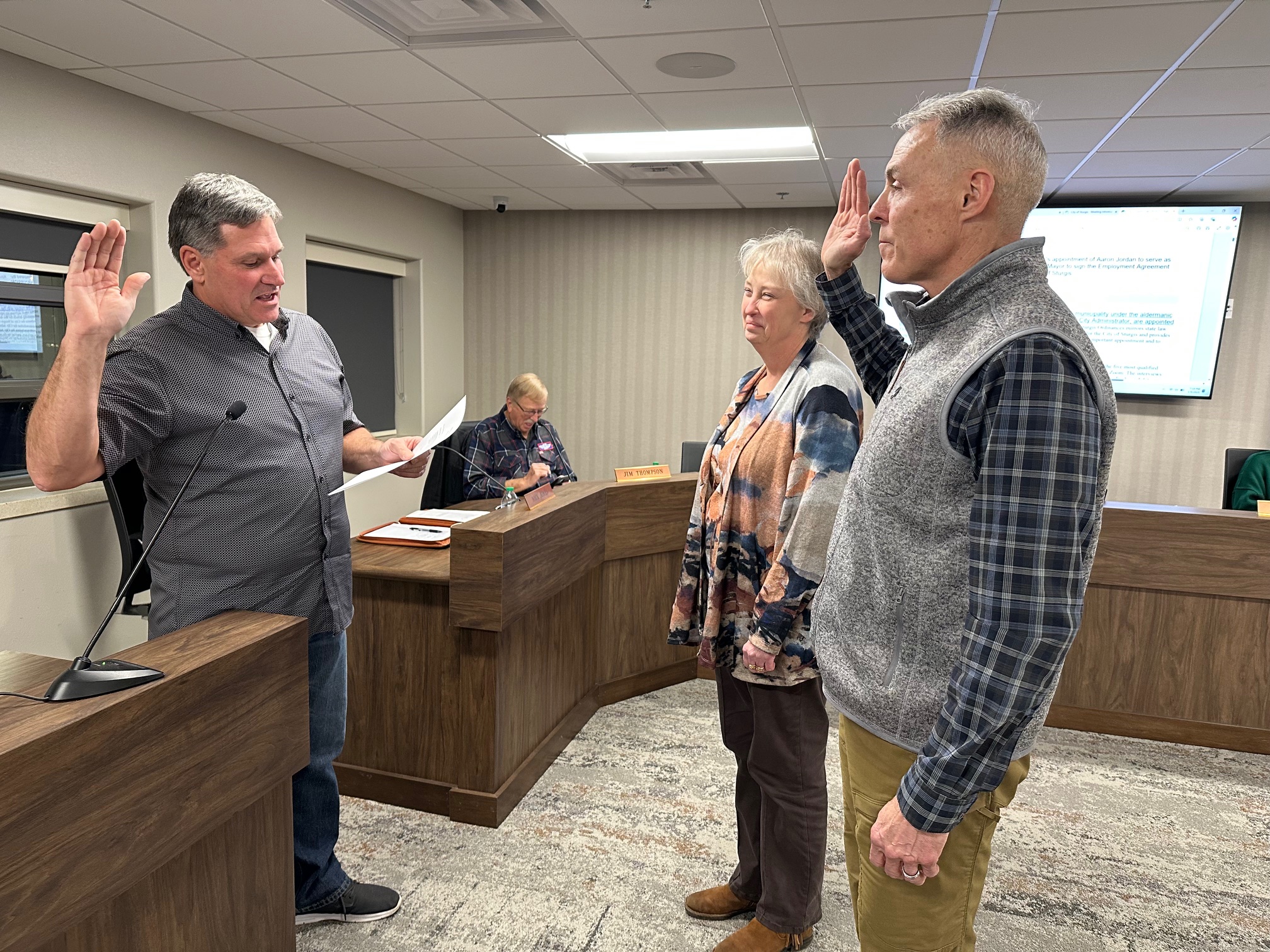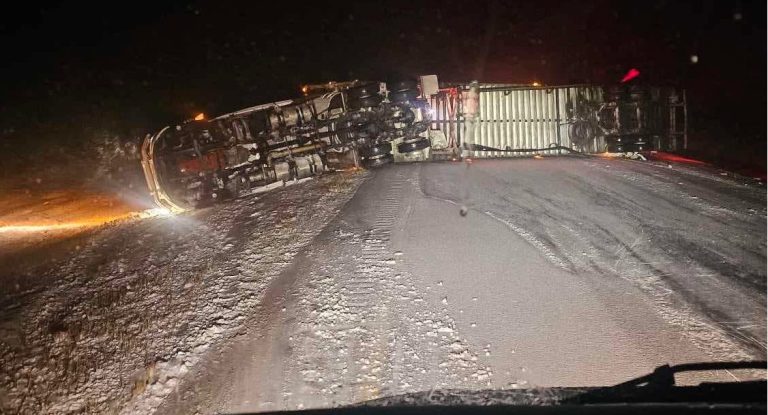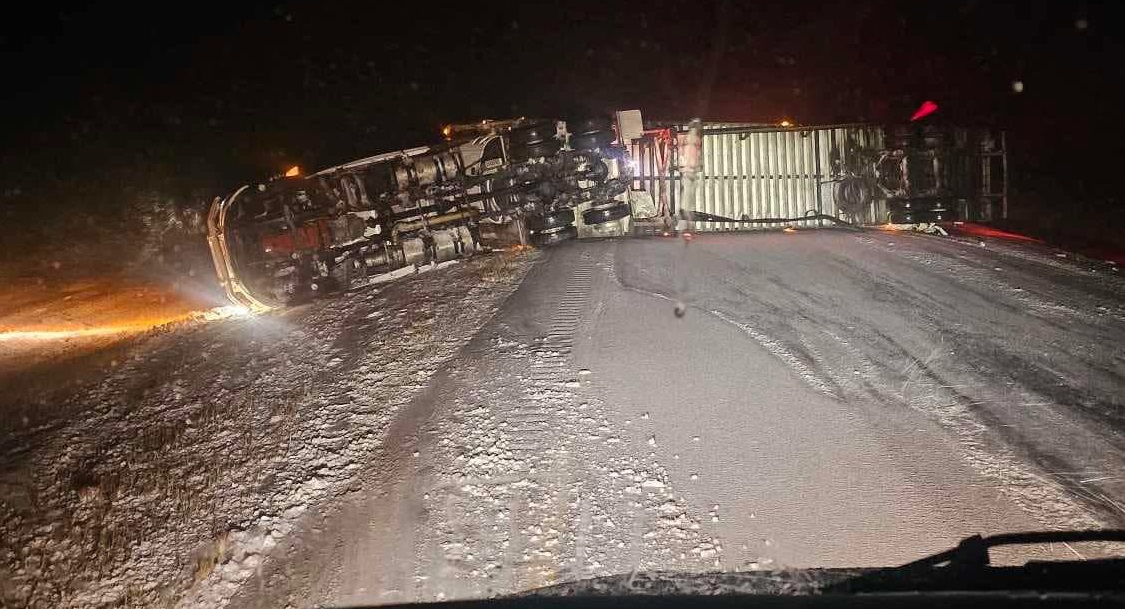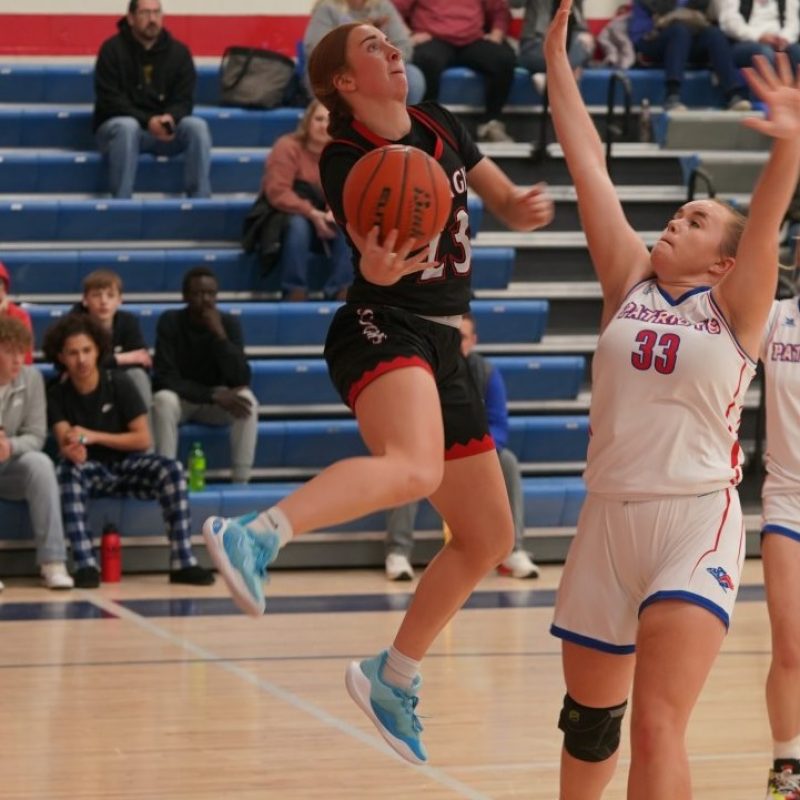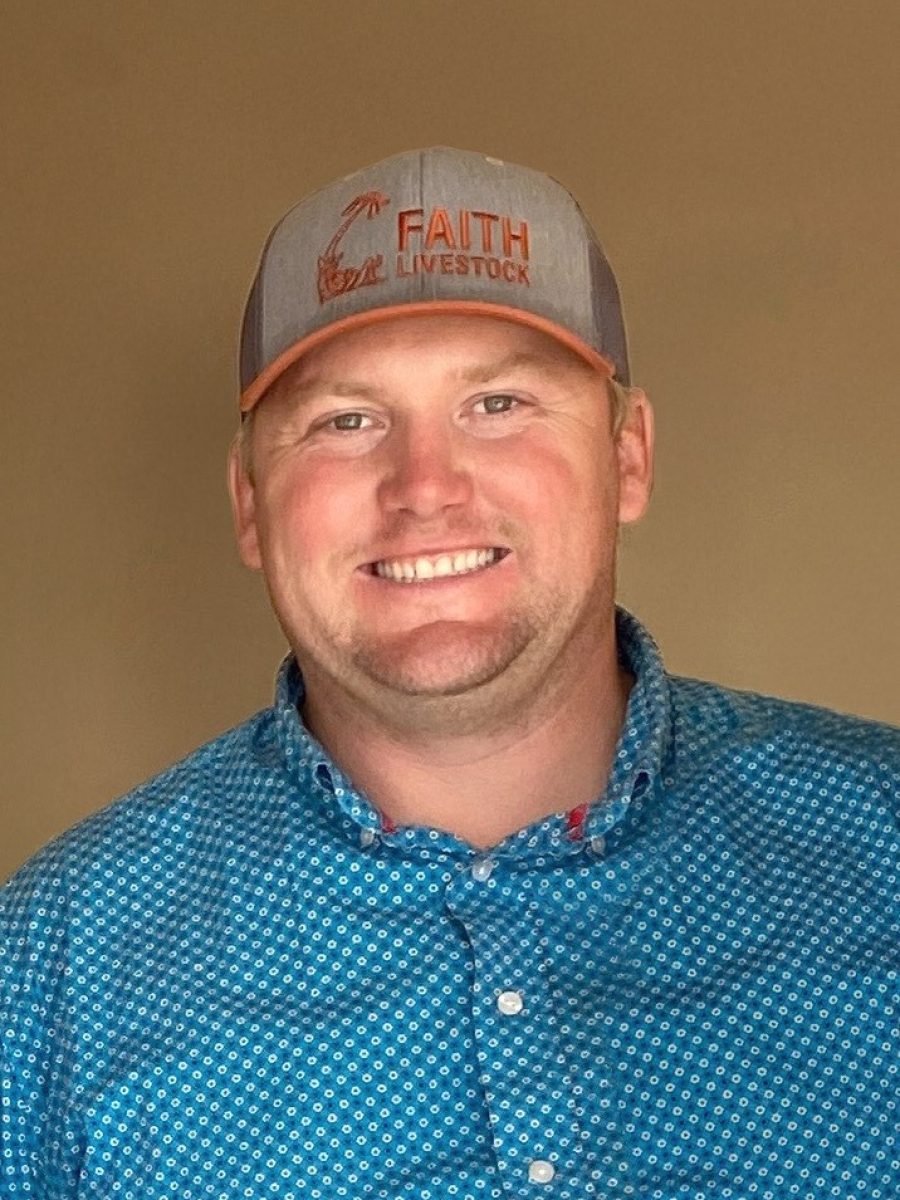HIGHMORE, SD – An experienced traffic-accident reconstruction expert is casting doubt on the claim made by South Dakota Attorney General Jason Ravnsborg that he thought he hit a deer with his car the night of Sept. 12 when in fact he had struck and killed a man.
Kurt Weiss is a mechanical engineer who has 34 years of experience in reconstructing hundreds of car accidents and is the owner of Case Study Collision Science, a California forensic research firm. Weiss is accredited by the Accreditation Commission for Traffic Accident Reconstruction and has worked on cases for government agencies and clients in civil and criminal trials.
After viewing an image of the site where Ravnsborg hit and killed 55-year-old Joseph Boever, reading articles about the incident and viewing a photo of Ravsnborg’s vehicle taken after the crash, Weiss said it is highly improbable that Ravnsborg would not have known he’d hit a man unless he was distracted and not looking at the road at the time of the collision.
Ravnsborg struck and killed Boever at 10:30 p.m. on Sept. 12 on U.S. Highway 14 just west of Highmore, S.D. on his way back from a political event in Redfield.
“If he [Ravnsborg] is looking forward and had the headlights on, it would be easy to discern if it’s someone’s jeans and a flannel [shirt] versus a beige-colored deer,” Weiss told News Watch in an interview. “But if he’s looking down or to the left and he blasts something, you might not know what you hit. But how could he not; look at the hole in the windshield.”
Weiss said that even at a high speed and on a dark night, Ravnsborg likely would have known he did not hit a deer if he had been driving without distraction.
“It would be easy to tell the difference; even at 100 mph, you would be able to tell the difference between an erect human versus a deer, no question,” Weiss said, “and that would be part of the interrogation of Mr. Ravnsborg.”
Weiss and another accident-reconstruction expert interviewed by News Watch said it will be difficult but certainly possible for investigators to determine how and where on or off the roadway the collision between Ravnsborg’s car and Boever took place. Information from the road, debris at the site, overhead images taken by drone cameras, tire or skid marks on the roadway, and details from the car and its internal information systems can all be used to determine what happened that night, they said.
The second reconstruction expert interviewed by News Watch, John Desch of John Desch Associates of New Jersey, said that if the investigation reveals that Ravnsborg struck Boever on the road shoulder and not in the travel lane, then Ravnsborg would have more culpability in Boever’s death.
“That would be clear negligence on the part of the driver,” Desch said. “If a pedestrian is walking on the shoulder, there is some kind of reliance on their part that they’re in a safer area.”
Weiss further said that the broken windshield of Ravnsborg’s 2011 Ford Taurus would likely have contained clothing fibers, human skin or hair that could have indicated to Ravnsborg or Hyde County Sheriff Mike Volek that Ravnsborg had hit a person and not a deer. Likewise, a deer likely would have left hair, hide or bone fragments in the broken windshield or on the front of the car to indicate an animal was struck.
“A jagged glass edge is going to catch some fibers, and for me, as an experienced reconstructionist, if you look at the glass edge, you know the difference between a human and a deer,” Weiss said. “It would be very apparent.”
Weiss examined a photo of Ravnsborg’s crashed vehicle posted by KELO news; the red Ford Taurus with a smashed windshield was also seen at a highway maintenance facility in Highmore by Nick Nemec, a cousin of Boever, when he was at the accident scene in the days following the collision.
Investigators from the South Dakota Highway Patrol and the state of North Dakota are investigating the accident.
Ravnsborg, a 44-year-old Republican, released a statement two days after the accident saying that on the night of the collision he thought he had struck a deer, that he stopped his car and immediately called Sheriff Volek, and that the two looked but could not find evidence of what Ravnsborg had struck. Ravnsborg said that because his car was damaged, Volek loaned him his own car to drive back to Pierre, where Ravnsborg lives.
On his way back to Pierre, about a half mile west of the crash site, Ravnsborg passed a white pickup that was stalled in the westbound ditch. That pickup was the vehicle that Boever’s family members believe he was walking toward when struck.
The next morning, returning in two vehicles to Highmore with his chief of staff, Tim Bormann, Ravnsborg said he and and Bormann stopped at the accident site to look around and discovered Boever’s body in the ditch. He said they then drove to Volek’s house and the formal investigation began.
Ravnsborg, who has several past speeding tickets, said he had not been drinking alcohol the night of the accident. The attorney general said he would not answer any further questions until the investigation is complete.
State officials, including Gov. Kristi Noem and Public Safety Director Craig Price, have acknowledged the fatal accident and the investigation but have released few details. Price said on Sept. 15 that the state hired a Wyoming accident-reconstruction expert to aid in the investigation.
Department of Public Safety spokesperson Tony Mangan told News Watch that the state has hired John Daily of Jackson Hole Scientific Investigations, Inc., of Jackson Hole, Wyo., to reconstruct the accident. Daily has a mechanical engineering degree and spent 25 years as a law enforcement officer; his website said he has investigated more than 1,000 accidents.
Mangan said on Sept. 16 that a contract with Daily’s firm had not yet been signed.
News Watch contacted Daily on Sept. 17 and he said, “Let’s just put it this way, I have not signed any contracts, and I best not chat with you until the process is much further along,” before hanging up.
Significant evidence to consider

Desch is also a veteran car-accident reconstruction expert. His firm has more than 30 years of experience in accident analysis and has a staff of 10 accredited reconstruction experts.
Desch said Daily is a highly respected reconstruction expert who has authored three textbooks, including Fundamentals of Traffic Crash Reconstruction, and has led numerous industry training sessions on accident reconstruction.
Desch said that if Boever was wearing dark clothing and walking in the traffic lane, it is possible that Ravnsborg could have struck him and not known that he hit a person.
A car traveling 65 mph is covering about 100 feet per second, so there isn’t much time for a driver to recognize an object that suddenly illuminates in the headlights, Desch said.
Desch said that if Boever was wearing dark clothing and was in the travel lane when struck, then the culpability of Ravnsborg would be diminished.
But if the evidence shows that Boever was on the highway shoulder or in the ditch when struck, then “that’s a whole different matter and then you begin to look at distractions,” Desch said.
Desch said the culpability of Ravnsborg increases if Boever was on the shoulder when struck, especially since Ravnsborg would have heard the loud sounds from the “rumble strips” cut into the pavement just off the travel lane likely would have looked up.
Weiss said the accident was clearly a high-speed collision because the passenger-side windshield on Ravnsborg’s car was smashed in.
Weiss said a low-profile vehicle such as a Ford Taurus would tend to sweep a person or a deer onto the hood and into the windshield, which should have made it easier to identify what object was struck.
Desch said a reconstruction expert might try to recreate the conditions of that night and actually drive the road to get a sense of what happened, or might create a computer simulation of what took place.
Desch and Weiss said the reconstruction expert may benefit from a wealth of information gathered from computers within Ravsnborg’s car.
According to manufacturer information, the 2011 Ford Taurus is equipped an air-bag control module that can show both pre-crash and crash data, including speed, engine RPM, brake and throttle application levels, rate of deceleration, and when safety measures such as air bags and seat belt tensioners deployed. Those data-collection systems, however, may not engage in a pedestrian accident if the impact is not significant enough, they said.
Weiss said the 2011 Ford might also have an infotainment system that can record significant real-time information, including the precise time an accident occurred and a global-positioning system that can show exactly where a car suddenly decelerated.
Weiss said that with a white line on the edge of the travel lane, a paved shoulder and then a gravel shoulder on the side of the road, “it would be ridiculous for Boever to be walking in the middle of the road because the shoulder is adequate” for him to walk on.
A News Watch reporter measured the shoulder at the scene of the accident and found that the paved and gravel shoulder together are 11 feet wide.
“If Boever’s not in the road, he’s doing his own thing, he’s off the roadway and he’s trying to stay safe, and if Ravnsborg comes along and gets off the road and pops him, that’s Ravnsborg’s problem,” Weiss said. “Boever did everything he could to stay safe, so that would be a focus.”
That section of U.S. 14 also has so-called “rumble strips” carved into the pavement just off the travel lane to alert drivers that they are leaving the roadway. If Ravnsborg’s car made contact with the strips before striking Boever, it would be more likely that he would have looked up and seen what he was about to hit even if he had been distracted prior, Weiss said.
A pair of black tire tracks are still clearly visible on the pavement in the westbound lane of U.S. 14 at the accident scene just outside of Highmore. The tire marks are heading off the roadway to the right; the right tire mark first appears on the paved shoulder of the road.
The tire tracks are dotted with evenly spaced splotches of green spray paint made by investigators. The tracks start a little more than half a mile from the U.S. 14 intersection with state Highway 47 and about 280 feet west of a 65 mph speed-limit sign that marks the end of a reduced-speed zone through Highmore.
The green paint near the tire tracks appeared on Sunday, Sept. 13, when crash investigators were swarming the highway, said Nick Nemec, a former state lawmaker. Nemec and his brother, Victor, have walked the scene of the collision that killed their cousin at least once a day since identifying his body because they want to understand what happened and are not getting information from state officials.
Nick Nemec said he first saw the green paint when he walked the scene for the first time on Sept. 14 after investigators left. A new series of white spray-painted squares appeared after investigators apparently returned to the collision scene on Sept. 15, he said.
Nemec said investigators returned to Highmore and shut down a roughly one-mile stretch of U.S. 14 on Sept. 17, and that South Dakota Highway Patrol troopers told him investigators were performing more tests at the scene of the collision.
The Nemecs believe Boever was walking west, with traffic, on the shoulder of U.S. 14 when he was struck as he headed toward his pickup that was in the ditch after becoming disabled earlier that evening. By the time
Victor Nemec left Boever’s house on Sept. 12, it was about 9:30 p.m., so he doesn’t think Boever had enough time to have already walked to his truck and begun to return to his home when he was struck.
The Nemecs said they do have serious doubts about the story Ravnsborg has told the public and wonder whether an alert driver could mistake a man for a deer, even on an unlit stretch of highway.
Another odd detail, Nick Nemec said, was that Ravnsborg returned to the scene the next day and found Boever’s body. Ravnsborg said in a statement issued Monday, Sept. 14, that as he and Bormann “approached Highmore, they noticed the debris from the crash the night before. The two men stopped to see if they could see the animal Ravnsborg thought he hit.”
Ravnsborg said the pair then walked the highway and found Boever’s body in the ditch, and that they then drove to Volek’s home to alert him. Nick Nemec said that seems a bit odd because Volek’s home is located about half a mile west of the crash scene, meaning that Ravnsborg and Bormann drove past Volek’s house to return to the accident scene before returning the borrowed car.
Distracted driving a concern for experts
Three key questions the reconstruction expert will try to answer are whether Ravnsborg was distracted while driving, if he was traveling above the speed limit when Boever was struck and where Boever was standing or walking when he was hit.
Speed can be determined through vehicle computer data or through formulas that are based on the “throw distance,” or how far the pedestrian’s body flew after being struck.
Desch said that if alcohol was not a factor, then Ravnsborg could have been distracted while driving, though he noted that drivers are typically legally allowed to check or adjust mirrors, to change the radio station or manipulate dials to defrost windows or change the temperature in the vehicle.
The experts said the deconstructionist can also glean significant information from an examination of Ravnsborg’s cellphones, including whether he may have been talking or texting on his phone. South Dakota law changed in July to make it a Class 2 misdemeanor to use a cellphone while driving except in an emergency, to use a GPS application or to read or enter a phone number.
In his statement, Ravnsborg said he turned over two cellphones he had with him the night of Sept. 12 to state investigators.
Desch said that since the collision occurred at 10:30 p.m., it is also possible that Ravnsborg fell asleep behind the wheel.
Ravensborg posted on his Facebook page the day before the accident, on Friday, Sept. 11, that he had driven to a Lincoln Day Dinner in Rapid City and had returned home to Pierre about 1:15 a.m. Saturday, a roughly 350-mile round trip. The trip from Pierre to Redfield the next day covered about 115 miles and the trip from Redfield to Highmore added about 70 miles more.
Without a video of the accident, the best on-scene evidence of where a person was located when struck would be scuff marks left by their shoes at the point of impact, though Weiss and Desch said scuff marks are rarely found. The final position of the body and injuries present can also indicate where a person was located and how he was struck, Weiss and Desch said.
Blood evidence and debris from the vehicle can also be used to indicate the location of the pedestrian when hit. The first blood visible at the site of the Ravnsborg crash is on the shoulder of the road, according to a visit to the site by a News Watch reporter on Sept. 17.
South Dakota statute 32-27-5 states that pedestrians can legally walk along a highway where there are no sidewalks but “shall, when practicable, walk only on the left side of the roadway or its shoulder facing traffic which may approach from the opposite direction.” A violation is a petty offense.
Victor Nemec, likely the last person to spend time with Boever, said it is likely that Boever was walking on the roadway shoulder and was walking with traffic on the way to his stalled vehicle. Nemec said Boever was probably wearing a dark-colored coat and would not have had time from the last time Nemec saw him to have been to his truck and already walking facing traffic on the way back to his home when he was hit.
Desch said an autopsy performed on Boever’s body would likely show whether he was struck from behind or in the front.
Weiss said it is difficult to anticipate how long a reconstruction may take, and the length can depend on the complexity of the case and whether the investigator has to work within a budget. The accuracy of a reconstruction is often dictated by the amount and quality of information developed by the initial crash investigation, Weiss said.
“It’s hard to work on deadlines in this industry,” he said. “You want to work at your own pace, as it results in a better process, and I hope he’s not working under a budget on a case like this.”
Both Weiss and Desch said they were happy to hear that the state was hiring a reconstructionist and had brought in investigators from North Dakota to reduce the potential for bias in the investigation.
“They better not just try to cover this thing up or make it a half-assed job,” Desch said. “That would not serve anybody.”
— South Dakota News Watch reporter Nick Lowrey contributed to this report.



